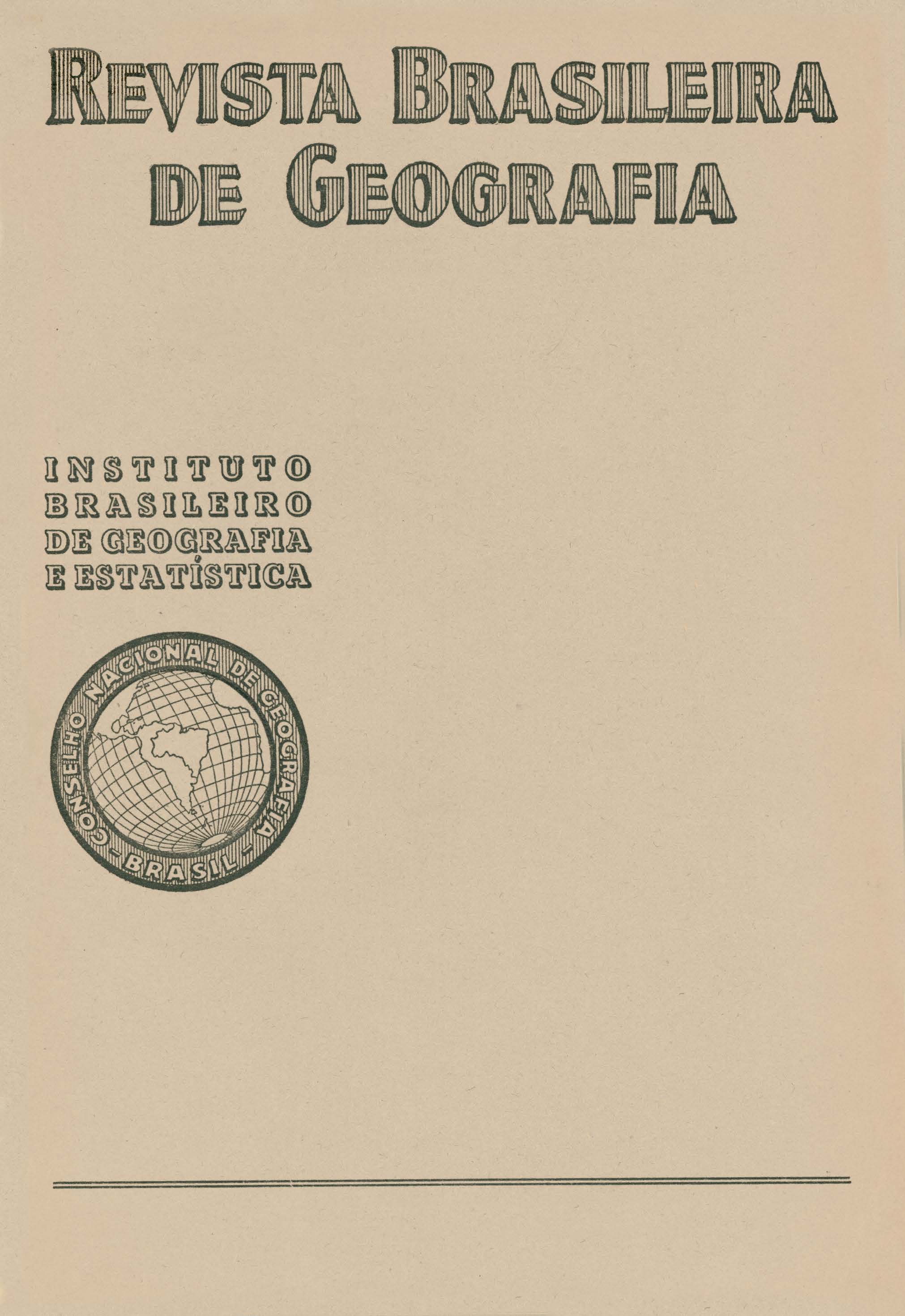Distribuição da população na Ilha do Governador
Palavras-chave:
Rio de Janeiro, Ilha do Governador, Geografia da População, FitogeografiaResumo
Studying the distribution of population in Governador island the author defines, initially, its position in relation to Rio de Janeiro. The year 1949 stands out as a fundamental step to the urbanization of the island as the bridge connecting the island to the continent was inaugurated, provoking profound modifications: the small urbanized areas expanded considerably and the vestiges of the former agriculture-based occupation, which still persisted until 1949, disappeared. After considering the transforming factors, dealer with in the introduction, the author proceeds to analyse the modern distribution of the population, the principal purpose of this paper.
Bearing in mind the differences observed, the author divides the island into three separate areas: the eastern beach zone, the hilly central zone and the western lowlands ("baixadas").
In the first zone, population is more densely concentrated; it coincides with the area of earlier occupation. The beaches were the attracting factor and the neighboring valleys oriented the opening of roads along which a linnear type of occupation developed, later evolving to individualized centers which occupied the adjacent slopes.
Not only physical conditions but the fishing activity also influenced the early occupation of the beaches; another factor was represented by the communications with Rio, then made by the sea.
The more important suburbs and urbanized zones concentrate nowadays on the eastern beaches.
Within the hilly central zone, topography represents a drawback to the occupation. The nonexistence of important rivers constitutes another negative factor. To set aside these adverse conditions, lots were divided and commercial companies were organized for their sale.
The division of properties in small residential lots constitutes indeed the principal characteristic of this zone. The planned construction of water reservoirs on the elevated are as will assume great importance. It is interesting to observe that the occupation is predominantly made through the construction of luxurious houses, a fact which constitutes a proof of the valorization of the land.
The third and last zone covers more than a third of the total area of the island. It is a military zone where the Aerial Base of Galeão (Brazilian Air Force) is established and where, with the exception of a small urbanized center, a rarefied occupation predominates.
The early occupation pattern is virtually inexistent due to the constant appropriations of land which is incorporated to the Base.
This situation, on the other hand, does not signify that the official action constitutes a negative factor. On the contrary, the author states, the Ministry of Aeronautics constructed housing projects for its employees and expanded the Base itself.
The author concludes by emphasizing the following points: a) the bridge caused the island to change from a rural area to a residential suburb of Rio; b) with the appearance of land selling companies, agricultural and industrial activities rapidly disappeared and c) the bridge also brought a new type of inhabitant, with much better economic conditions.






